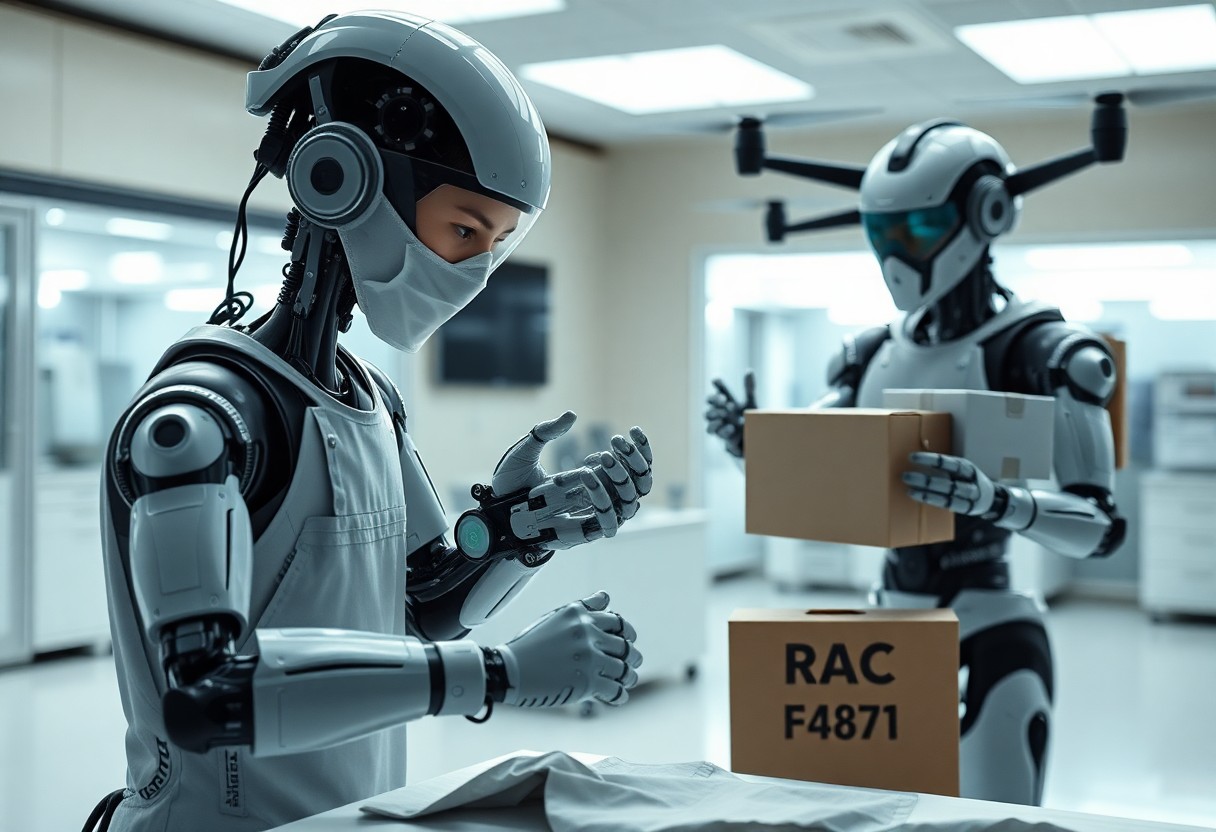Over the past few decades, military robots have emerged as transformative tools in disaster response and humanitarian aid, largely enhancing the effectiveness of relief operations. You may be surprised to learn how these advanced technologies assist in tasks ranging from search and rescue missions to logistical support in challenging environments. In this blog post, you will explore the multifaceted roles that military robots play in building resilience during crises, ensuring that both humanitarian efforts and disaster management can adapt and respond swiftly to save lives and minimize suffering.
Understanding Resilience in Disaster Response
As you navigate the complexities of disaster response, understanding resilience is important. Resilience refers to the ability of individuals and communities to anticipate, prepare for, respond to, and recover from adverse situations. It encompasses not only the immediate reaction to crises but also the longer-term adjustments necessary for rebuilding and adaptation. Enhancing resilience in disaster response ensures that your efforts can effectively withstand and rebound from unexpected challenges, ultimately saving lives and minimizing losses.
Definition of Resilience
Along your journey, it is important to acknowledge that resilience is the capacity to recover quickly from difficulties. It involves a spectrum of psychological, social, and infrastructural processes that enable individuals and systems to maintain functionality despite disruptive events. Resilience encompasses not just bouncing back but also evolving to face future challenges, ensuring that you and your community are better prepared.
Importance in Humanitarian Context
By fostering resilience in humanitarian efforts, you can significantly enhance the effectiveness of disaster response initiatives. Resilient communities are better equipped to organize resources, communicate effectively, and support one another during crises. This adaptability can lead to quicker recovery times and more impactful interventions.
Plus, prioritizing resilience in humanitarian contexts allows you to build sustainable systems that empower local communities. When you invest in resilience, you not only address immediate needs but also create a foundation for long-term recovery and growth. By focusing on enhancing capacity and fostering connections, your efforts can ensure that communities are not merely surviving disasters but thriving in the aftermath, thereby leading to more meaningful and lasting change.
Overview of Military Robots
If you are curious about the impact of military robots on disaster response and humanitarian aid, it’s crucial to understand their role. These sophisticated machines enhance operational capabilities, allowing teams to efficiently navigate hazardous environments, gather intelligence, and deliver aid. With their ability to operate in various terrains and conditions, military robots prove to be valuable assets during emergencies.
Types of Military Robots Used
Any effective disaster response involves several types of military robots, which include:
- Unmanned Aerial Vehicles (UAVs)
- Unmanned Ground Vehicles (UGVs)
- Robotic Exoskeletons
- Drones for Surveillance
- Search and Rescue Rovers
| Type | Description |
| UAVs | Robots that fly autonomously for surveillance and mapping. |
| UGVs | Robots that traverse ground terrain for transportation and reconnaissance. |
| Exoskeletons | Wearable robotics that augment human strength and endurance. |
| Drones | Small UAVs tasked with monitoring areas of interest. |
| Rovers | Ground robots designed for search and rescue missions. |
Technological Advancements
On the forefront of innovation, military robots have seen significant developments in technology that enhance their effectiveness in challenging environments. These advancements cover areas such as artificial intelligence, sensory systems, and communication technologies, enabling robots to make real-time decisions and adapt to changing situations.
The integration of advanced technologies has transformed the capabilities of military robots. With improved autonomy, they can operate in complex environments while minimizing the risk to human responders. Enhanced sensors allow for better data gathering and analysis, which is vital in disaster scenarios. Furthermore, advancements in communication systems ensure seamless coordination between robots and human teams, optimizing response efforts and improving overall outcomes.
Role of Military Robots in Disaster Response
Now, military robots are transforming disaster response by enhancing the efficiency and effectiveness of operations. These advanced machines complement human efforts, allowing you to address emergencies more swiftly and with greater precision. By taking on risky tasks, they can create safer environments for human responders, ultimately improving outcomes in disaster-stricken areas.
Search and Rescue Operations
With the ability to access hazardous or hard-to-reach locations, military robots play a vital role in search and rescue operations. These robots are equipped with advanced sensors and imaging technology that help you locate survivors in the aftermath of natural disasters. By deploying drones and ground robots, emergency responders can gather critical information and execute rescue missions more effectively.
Logistics and Supply Chain Support
Search and supply chain support is increasingly enhanced by military robots during disaster scenarios. These robots facilitate the transportation of necessary supplies, including food, water, and medical equipment, to affected areas. By ensuring timely delivery, they help you maintain a steady flow of resources necessary for effective disaster response.
In addition, military robots can automate the sorting and distribution of supplies, reducing the burden on human responders. By leveraging autonomous vehicles for transport, you can decrease the time it takes to reach isolated communities. Their ability to navigate challenging terrains increases the reliability of logistics during disasters, ensuring that relief efforts remain consistent and timely, even in the most difficult circumstances.
Ethical Considerations in Using Military Robots
To navigate the complex landscape of disaster response and humanitarian aid, ethical considerations surrounding military robots must be thoroughly evaluated. Understanding the implications of deploying such technology can help you assess the balance between efficiency and moral responsibility, ensuring that your action aligns with humanitarian values and laws of warfare.
Autonomy and Decision-Making
The use of autonomous military robots raises questions about their decision-making capabilities in high-stakes scenarios. You must consider whether machines can adequately interpret the complexities of human emotions and ethical dilemmas in disaster situations, potentially leading to unintended consequences and moral quandaries.
Human Oversight and Accountability
Along with the deployment of military robots, maintaining human oversight is vital for accountability. Ensuring that decisions made by machines are supervised by trained personnel can mitigate risks associated with unintended actions, allowing you to uphold ethical standards and safeguard against potential violations.
Accountability in the deployment of military robots hinges on the oversight mechanisms you establish. These measures ensure that human operators remain in control, allowing you to evaluate decisions made and rectify any potential errors. By fostering a transparent decision-making process, you can better guarantee adherence to ethical norms and effectively respond to accountability concerns in humanitarian contexts.
Case Studies of Military Robots in Action
Many successful implementations of military robots in disaster response demonstrate their effectiveness and reliability. Here are some notable case studies:
- 2010 Haiti Earthquake – UAVs provided real-time aerial footage, aiding rescue teams in finding survivors.
- 2011 Japan Tsunami – Unmanned ground vehicles assisted in debris removal, clearing paths for first responders.
- 2016 Italy Earthquake – Robots were deployed to locate trapped individuals in inaccessible areas, resulting in several rescues.
- 2020 Australian Bushfires – Drones helped assess fire spread and locate endangered wildlife, ensuring a swift response.
Successful Deployments
After analyzing various deployments, the outcomes highlight the strategic advantages of using military robots. They have significantly accelerated response times and improved situational awareness in challenging environments, making rescue operations more efficient.
Lessons Learned
After deploying military robots in real-life scenarios, various insights have emerged that enhance future operations. Evaluating success stories provides a roadmap for better integration of technology in disaster response.
Understanding these lessons is imperative for optimizing military robots’ roles in future emergencies. Key takeaways include the importance of adapting technology to the specific terrain and situation, enhancing operator training for better user interaction, and developing better communication systems between drones and ground units. Such improvements can greatly increase efficiency and safety in rescue missions, ensuring you are better prepared for the challenges ahead.
Future Prospects for Military Robots in Humanitarian Aid
Unlike traditional methods of disaster response, military robots are set to revolutionize humanitarian aid in the future. As their technology advances, you can expect these intelligent machines to carry out complex tasks in challenging environments, improving efficiency and safety for human responders. With innovations such as enhanced communication networks and autonomous navigation, military robots will become indispensable assets in crises, making your contribution to disaster recovery more effective.
Innovations on the Horizon
Behind the scenes, research and development are paving the way for groundbreaking improvements in military robotics. You will soon witness enhancements like artificial intelligence-driven decision-making and advanced sensor technology. These innovations will enable robots to better assess hazardous situations and provide real-time data, allowing you to streamline humanitarian efforts and optimize resource allocation.
Integration with NGOs and Local Agencies
An emerging trend is the integration of military robots with NGOs and local agencies in disaster response efforts. This collaboration allows for a seamless exchange of information and resources, enhancing the overall efficiency of your humanitarian initiatives.
In addition to leveraging military robot capabilities, the partnership with NGOs and local agencies ensures a more holistic approach to disaster response. By aligning your operational strategies, you can maximize the impact of relief efforts. Combining the technical expertise of military robotics with the local knowledge and experience of agencies allows for tailored solutions that best address the unique challenges of each situation. This synergy not only improves response times but also enhances the overall effectiveness of your humanitarian aid initiatives.
To wrap up
Following this, it is clear that military robots significantly enhance disaster response and humanitarian aid efforts. By incorporating these advanced technologies into your emergency preparedness plans, you can increase efficiency, safety, and effectiveness in crisis situations. Their unique capabilities allow you to overcome challenging environments, save lives, and deliver important supplies, ultimately building resilience in your community. Embracing the role of military robots in these scenarios paves the way for a more adaptable and responsive future in humanitarian efforts.






